Here stands an elegant slim young man, wearing a scarlet coat and black breeches. With a long, straight nose and high forehead, he is tall and brimming with confidence. In his right hand he holds a pair of spectacles, in his left a plan of some kind, both of which suggest the seriousness that becomes a man of his station. If he were on his own, one might describe him as haughty, but he is saved from this by the charming and softening nature of his beautiful red-haired wife, Bessy. Wearing a long white silk dress, with a string of pearls flung almost casually across her right shoulder, she leads him out of some Ionic portico into a landscape which reflects his accomplishments; those in architecture represented by a distant ‘eyecatcher’, probably Life Hill Farm; in agriculture by the acres of plantations and enclosed fields which stretch out before him. Her hair, strung with pearls, catches the wind and at her feet a brown and white spaniel stands adoringly. She is gazing at her husband with a look of both love and admiration. Often called The Evening Walk – in comparison to Gainsborough’s famous painting of Mr and Mrs William Hallett, The Morning Walk – it is a portrait of the greatest charm.
More important, however, is the fact that it represents Sir Christopher Sykes as he saw himself, a man who was at the very pinnacle of his achievements, who had risen from the ranks of the merchant class to become the epitome of the aristocratic landowner. In the general scheme of things it could not possibly have come at a more appropriate time. His land holdings were approaching their peak. He bought eight estates in the years 1792 and 1793, spending on them in excess of £52,000, the largest sum he had ever spent in such a short period. This brought the rental income he received annually from his estates up to £12,004. 8 s . ¾ d. , which was a remarkable increase on the £1,960. 11 s . 6 d . he had started with in 1771.
The spaniel which Romney painted standing at the feet of its owners is a sporting dog, lending the suggestion, not incorrectly, that the subject was a lover of field sports. Christopher considered ‘the pleasures of the chase’ to be ‘really useful and beneficial to Society’. He laid out his reasons for this in a letter to his close friend Thomas Grimston. ‘They give opportunities of wearing off Shinesses, dispelling temporary differences, forming new friendships and cementing old, and draw the Gentlemen of the Country into one closer bond of Society.’ 49 His account book shows that he was a regular subscriber to a number of hunts throughout his life, while his diaries record several occasions when he rode out with hounds, his last outing having been in November, 1785, when he ‘hunted with Sir J Legard’. 50
In spite of this, it was well known in the neighbourhood that hunting was not allowed at Sledmere. The reason for this was that he did not want his young plantations trampled to pieces. His neighbours were happy to respect his wishes. ‘You have objections, which no one has a right to controvert or even discuss,’ Lord Carlisle had written to him in October, 1788 from his nearby seat at Castle Howard. ‘You may depend upon my hounds not approaching in quest of their game any covers from which it is your inclination to exclude them.’ This rule did not apply, however, to other parts of his estate where hounds were free to go as they pleased. ‘I thankfully receive the permission to go upon your other estates,’ wrote Carlisle, ‘with the obliging offer of making covers, & accommodations upon them.’ 51
The final element in the Romney portrait, represented by the ruined Temple and the distant view of Life Hill, was architecture. It was timely since the arrival of the painting signified the virtual completion of the house. Rose was critical of the picture, ‘indeed I cannot see any likeness to Lady Sykes,’ he said dismissively, 52 and there was a long-running argument as to where to hang it. Neither Rose nor his wife wanted it to hang in the Drawing Room. ‘Mrs R says the Picture must not hang over the Chimney,’ he had told Christopher in August, 1792, ‘and she is sure that Lady Sykes will not agree to it.’ 53 He even suggested that ‘Lady Sykes … shall scold when she sees you.’ 54 In the end it was hung in the Dining Room, where it still hangs to this day.
It seems that by the end of August, 1793, Christopher, although still telling people that ‘my House is far from finished’, was ready to receive a few guests outside the family. ‘How happy it would make Lady Sykes and myself,’ he wrote to the Duke of Leeds, on hearing that he was to visit Beverley, ‘if my Lady Duchess and your Grace would do us the Favor to come upon the Wolds … we have Beds sufficient to accommodate your Grace, and any Friends you may do us the Honor to bring with you.’ 55 By the time they visited, in October, with the exception of the Drawing Room and the Gallery, they would have found most of the main rooms painted and papered. Christopher having spent the princely sum of £1,384. 17 s . 5 d . in 1792 and 1793 on furniture, there was also presumably no lack of places to sit.
There was still much work to be done on the Gallery, including the laying of the floor, but so impressed by it were all those who saw it that Christopher decided to commission a picture of it to send out to all his friends. The man he chose to do this was Thomas Malton, an architectural draughtsman and occasional scene painter who had recently published with some success A Picturesque Tour Through the Cities of London and Westminster . Malton’s finished drawing, a watercolour, which arrived early in 1795, was exquisite. It showed the room empty except for a desk, thereby considerably enhancing its size, and the feeling of space was further magnified by the use of perspective, achieved by leading the eye towards the window at the far end and out of it to the church tower. Three minute figures, one seated at the desk, the others lolling in an alcove, completed the impression of vastness. The plate read ‘The Library at Sledmere, the Seat of Sir Christopher Sykes Bart, in the East Riding of Yorkshire’, and in the bottom left-hand corner an inscription gave credit where it was most due: ‘Designed and executed by Josh. Rose in 1794.’ Two hundred black and white impressions were made from it which must have greatly stirred the imaginations of all those who received them. The architectural historian, Christopher Hussey, wrote of it in 1949, ‘architecturally designed libraries are a feature of several of Adam’s country houses, most notably Kenwood. But this one surpasses them all in majesty of conception, suggesting rather the library of a college or learned and wealthy society; indeed in the space allotted to it, in the amount of shelf room, and in the beauty of its decoration it is surely the climax of the Georgian conception of the library as the heart and soul of the country house.’ 56
So the Gallery officially became the Library. The bookshelves ran down both sides from the floor to beneath the vaulting, with semicircular ones at each end on either side of the windows. Two great mirrors, designed by Wyatt, hung on the north wall while the floor was covered with a fine worsted carpet which stretched the entire length of the room and had a design which matched that of the ceiling. This was an entirely homespun affair, having been woven at a carpet factory run by Mr Christopher Bainton on one of Christopher’s estates at Wansford. Today it only exists in the Malton watercolour, since at the time of the fire it was being stored in the attics and was subsequently amongst the few contents of the house that were destroyed.
Thomas Malton also painted a watercolour of the exterior of the house, which is the only existing picture showing the grounds as they were in 1795. On the right of the picture, the landscape to the east of the house is heavily planted with large shrubs and maturing trees, and the ground slopes down to Christopher’s beautiful Orangery, with its rows of tall windows. In the middle a roughly cut lawn rises on a gentle incline right up the front door, which is reached by five steps, and where a number of people are congregating. To the left of the house a number of deer are gathered beneath a mature tree, observed by a woman and child, while in the foreground a couple are enjoying a leisurely stroll. It represents a romantic idyll, and is the first recorded view of the final realisation of a great project.
Читать дальше
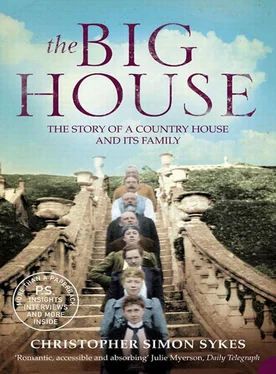
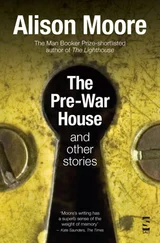

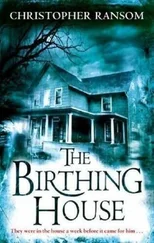

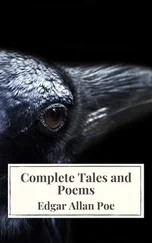

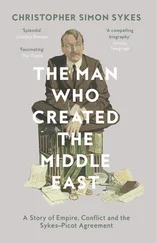

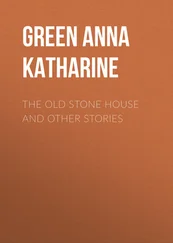
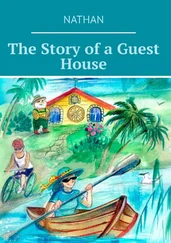

![Edward Ellis - Adrift on the Pacific - A Boys [sic] Story of the Sea and its Perils](/books/753342/edward-ellis-adrift-on-the-pacific-a-boys-sic-s-thumb.webp)